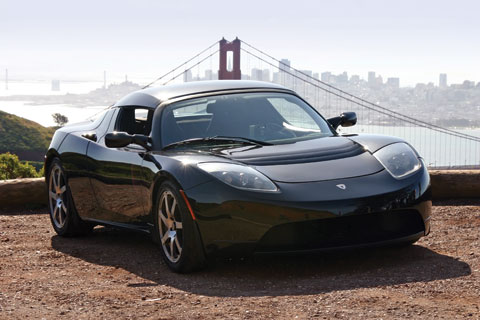Many of these forward-looking vehicles with green technologies are about to change the automobile world.
When a car is labeled “green,” one can’t help but conjure up images of unattractive boxy autos with lagging engines and minimalist interiors. Some are just too cute to be taken seriously by any car enthusiast, while others are tiny futuristic concept cars that look like science projects. But with increasing worldwide interest in the environment, carmakers are rethinking eco-conscious autos, turning what was once a niche market into a mega-trend for the masses.
Americans drive more than five billion miles a day, which accounts for about 40 percent of the country’s oil consumption. With that in mind, the automobile world is starting to seriously address engine fuel efficiency. The current economic situation and serious threat of global warming has sparked a race among major carmakers to produce the most ultra-efficient, super-green cars that are as socially aware as the people who drive them.
So as the price of oil soars as resources deplete, cars are being designed to focus on saving natural resources-as well as the dollars in your wallet-with the most minimal carbon footprints. And as the demand for these alternative transport choices grow exponentially, and competition among carmakers tightens, auto companies are constantly trying to invent new technological advances in order to raise the level of green cars to match today’s high performance sports cars. As a result, many of these forward-looking vehicles with green technologies are about to change the automobile world.
There is an enormous effort from car engineers and designers to produce a high-powered engine with a greener function. The current trends in eco-friendly products have inspired carmakers to create luxurious counterparts to those fuel-guzzling luxury sedans. BMW went as far as developing the first luxury sedan powered by hydrogen, and the LS 600h from Lexus provides the same luxury driving experience and the high degree of performance one would expect from Lexus combined with hybrid technology.
Three other notable eco-friendly car designs that carry on this philosophy are the Tesla Roadster, the BMW Hydrogen 7 Series, and the Venturi Fetish, all of which are constructed to confirm the assertion that green can be glitzy. The sporty two-seater Fetish is powered by an electric motor that can utilize about 240 horsepower, with a completely emission-free output using a powerful liquid-cooled lithium-ion battery. It is not only a special edition car that is limited to 25 units, but it is handcrafted in a matter of a mere four months. Its racy exterior mirrors its sporty intentions; its lightweight carbon-fiber body can accelerate from zero to 60 mph in only five seconds.
Some of the newer concept cars on the market take the idea of high-powered, low-consumption to another level, such as the ultra-stylish Tesla Roadster with its $100,000 price tag. This emission-free sports car has a super powerful engine with 248 horsepower that reaches 60 mph in an impressive 4.2 seconds.
Some cars have problems implementing green initiatives without extensive technical effort. Many car engineers try to solve the problem in a variety of creative ways, from trying out new contraptions to encouraging cutting-edge developments. The Volvo ReCharge concept car is a plug-in hybrid with electric engines installed in the wheels. As a matter of playful design, these battery-charging wheels come in neon green in order to show off its eco-conscious objectives. The Audi Q7 super-SUV achieves up to 280 horsepower but can get about 24 mpg with its constantly interchanging hybrid engine. Thanks to carmakers reengineering larger SUV models in new ways, those who don’t even need such a large vehicle can keep their conscience free from guilt in this green era.
These and many more cars about to enter the market are striving to leave a miniscule footprint on the environment, but aspire to make some major impressions with their sporty engines and stylish designs. It proves that one doesn’t need to compromise size or design in order to adjust to a more economical and eco-conscious lifestyle. All of the new innovations in the car industry today have allowed eco-conscious drivers to help conserve our natural resources, but with much more glamorous intentions that show off their good taste and emit some very good karma.

























